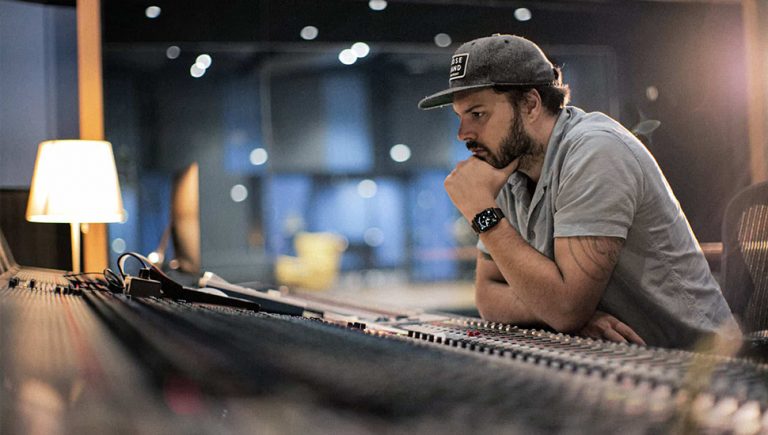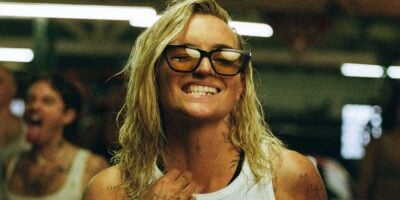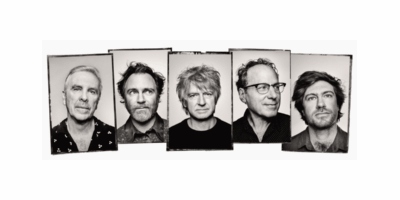If you visit EarthCam.com, you can view a 24-hour-a-day livestream of the Abbey Road zebra crossing. The London street crossing is most famous for its appearance on the cover of The Beatles’ 1969 studio LP, Abbey Road, which was recorded in the neighbouring recording studios.
The studios featured prominently in Peter Jackson’s recent Beatles documentary, Get Back, although the building was still called EMI Recording Studios at the time. The name Abbey Road Studios was adopted in the 1970s and the otherwise-quiet London street has become a part of rock and pop folklore.
Abbey Road remains a functioning recording studio of the highest standard. In addition to The Beatles, the likes of Pink Floyd, Radiohead, Kanye West, Kylie Minogue and Adele have all recorded there.
In 2015, The Abbey Road Institute was launched as a school focused on music production and audio engineering. Through its Advanced Diploma Of Music Industry, the institute equips aspiring engineers and producers with professional know-how and industry connections.
Beginning in 2021, The Abbey Road Institute struck up a partnership with Sydney’s most comprehensive recording complex, Studios 301 in Alexandria. Students who enrolled in year one of the Advanced Diploma Of Music Industry will soon graduate, while the next school year begins on Monday February 28th.
Not only does the one-year program draw on the innovative recording techniques cultivated at both Abbey Road and 301, but its modules are taught by a number of industry professionals spanning production, engineering, film production and music management.
Love Music?
Get your daily dose of metal, rock, indie, pop, and everything else in between.
View this post on Instagram
Stefan Du Randt is one of the Diploma’s head lecturers. Du Randt works as a producer and engineer at 301, where he’s engineered recordings by Mac Miller, Vera Blue, Thelma Plum and Guy Sebastian and mixed the likes of RISSA, Polish Club, St. Christoph & Shaade and Dylan Wright.
Tone Deaf spoke to Du Randt about the Advanced Diploma Of Music Industry and the unique opportunities that come from studying at Studios 301.
Tone Deaf: Hi Stefan. You started your career in South Africa. When did you join 301?
Stefan Du Randt: I actually started working at 301 Castlereagh Street – that’s where the name comes from – back when they were still with EMI, but my dream was always to work at the actual 301 [in Alexandria].
When I was in South Africa I already worked on some big projects, but here I had to start from scratch again, and it’s only gone from strength to strength. It’s an awesome studio – it’s really world class.
TD: What makes 301 unique?
SDR: We’re kind of the only large format studio in Sydney. Normally, before COVID, we would do all the international touring artists, but since then I mix 90% of the time. Recently we started putting in a Dolby Atmos room, which is in the room where I mix, so I’m hoping to do 50% Dolby Atmos and 50% stereo mixes.
TD: How much access to 301 facilities do the Abbey Road Institute students have?
SDR: The first trimester is an introduction to all the mixing and engineering tools so every week we’re basically in either Studio 1 or Studio 2. Studio 1 is the flagship studio and Studio 2’s an amazing mix room and kind of more for smaller indie rock bands.
When [students] do their final project they can actually book Studio 1 and 2, depending on whatever they decide to do – some of them are doing more strings, some do bands. And then they also have a really awesome little studio that also has a great analogue console in it where they can do overdubs or vocals or whatever.
TD: Tell me about some of the equipment in the two main studios.
SDR: Studio 2 has an SSL console in it. Dr Dre mixes on an SSL console. You used to record on a Neve console, which is the one that’s in Studio 1, and then mix on an SSL. But then there’s also Neve preamps in Studio 2. Studio 2, any other studio in Australia, that would be your main studio.
TD: What sort of expertise and professionalism can students expect to develop by the end of the one-year course?
SDR: We want them to be able to walk into a job as an assistant at 301 when they leave. That’s the level of excellence we want them to be at.
The way I got taught, we never really got to use the gear – we didn’t have that great gear, to be honest – and by the end, I didn’t really feel like I actually knew what I was doing. But what I’m trying to do is kind of mentor the students. We all put in extra time, when they’re using their studio, we’ll go in there and see what they’re doing and help them out.
TD: Who else is involved in delivering the course?
SDR: Every week we get some working industry professional to come in. Every Friday there’s a guest lecture, even sometimes by us. For instance, now that I’m obsessed with Dolby Atmos I might do a guest lecture on that because that’s not in the syllabus yet.
We basically just get the people at the top of the game to come in. It’s not all music production focused. There’s also a lot of music managers, people from APRA and ARIA and people who do video game audio.
TD: There is some theory involved, but is the program strongly weighted towards practical education?
SDR: It’s very, very, very studio focused, and that’s not only in my class. The other classes, they actually write music and stuff like that. The notes and the tests are not very theoretical; it’s more practical. So, it’s like, write a song, do a project in Ableton Live, go do a live show sound.
We also encourage the students to get in the studios as much as they can and basically just get really immersed in 301. There’s a lot of industry people around, so we encourage the students to immerse themselves in the community so you can be way more connected than when you walked in.


































